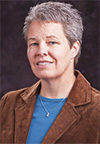Subclinical trace mineral deficiencies can result in reduced conception rates, but adding more of the same or a different source of a trace mineral above requirement may or may not increase level of reproduction.
Partner with your veterinarian to develop a sound animal health and biosecurity program to minimize drags to reproductive response. Presence of even one animal persistently infected with BVD will reduce herd fertility.
A herd that typically achieves 85 percent or greater pregnancy rate in a 60-day breeding season makes a good candidate for an A.I. and estrus synchronization program.
The following checklist should draw attention to the details that make these programs more successful:
- Responses will be highest in cows that are 45 days from calving or greater at the time of A.I. and in a body condition score of 5 or greater.
- Use a synchronization system with a CIDR or MGA if you suspect some females are not cycling.
- Moving a later-calving cow to an earlier calving date generates roughly 40 pounds more calf per cycle advanced. Consider use of more economical semen on these females that are in good condition and at least 30 days since calving at A.I.
- Select from the short list of recommended synchronization protocols (Applied Reproductive Strategies in Beef Cattle) published in major sire catalogs.
- Follow the protocol as outlined. Pay particular attention to the recommended intervals between the last injection of prostaglandin and timed A.I.
- Use the Estrus Synchronization Planner or Estrrs Synchronization Planner for mobile devices to plan and schedule your synchronization program. Double-check the necessary help is available on the scheduled dates.
- Only synchronize as many animals as you can inseminate in your facilities in a three- to four-hour time window.
- For timed A.I., don’t overestimate your ability to inseminate a large number of females. Have a backup plan or more help available.
- Double-check you have the necessary doses of synchronization products on hand. Give the correct product on the correct day and at the proper dosage via the correct route. These items are easy to confuse when you only use them once per year.
- Make sure each animal receives the treatment; accuracy is more important than speed. Use 1.5-inch, 18-gauge needles to give intramuscular injections. Follow BQA guidelines.
- Before the season starts, check the accuracy of an automatic thaw unit and monitor while in use. Clean thaw unit on a regular basis.
- Use thawing instructions from semen provider, generally in the range of 90 to 98ºF for 30 to 45 seconds. Use a watch or timer; do not guess.
- Clean and inventory supplies in A.I. kit; ensure an adequate supply of gloves, sheaths, lube and paper towels.
- Handling facilities should be in good working condition to minimize stress on animals and people.
- Replace missing or unreadable eartags.
- Use a Certified Semen Services (CSS) provider. A check of semen quality prior to freezing is not part of the routine processing done in smaller collection facilities.
- Keep accurate inventory records of semen tanks.
- Canisters should not be raised above the frost line in the neck of the tank for more than five to eight seconds. Thermal injury is permanent. Increased handling increases the risk of damage.
- Thaw no more semen than can be used in 10 minutes or less. Prevent straw-to-straw contact when thawing.
- If breeding on heat, keep detailed records at each check. Inseminate four to 12 hours after first observed standing heat.
- Keep natural service sires out of breeding pasture until 10 to 14 days after A.I. if you want to identify A.I.-sired calves without DNA parentage testing.
- Avoid stressors such as those caused by transportation, nutritional changes or ambient temperature/humidity strain during early embryonic development.
Most sensitive from day 5 to 18 (embryo arrival in uterus through maternal recognition of pregnancy) and still sensitive until attachment is complete at day 42.
- For more information, see the publication “Tips for a Successful Synchronization Program”
—Excerpts from Kansas State University Research and Extension Beef Tips newsletter

-
Sandy Johnson
- Livestock Specialist
- Kansas State University
- Email Sandy Johnson











